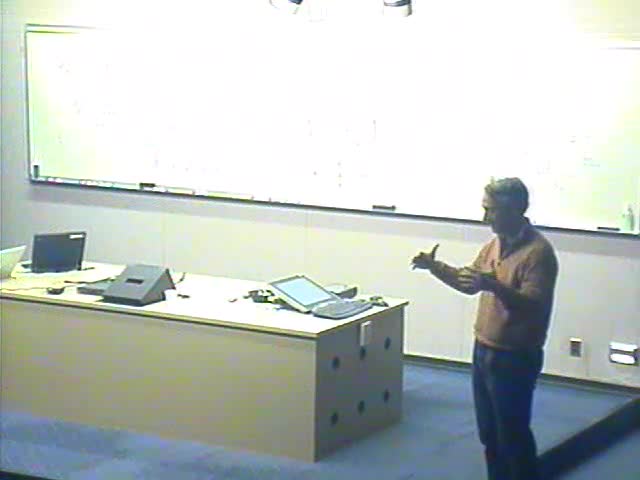Modularity, Feedback and Recursion in the EGF Receptor System
Presenter
March 6, 2008
Keywords:
- Mathematical modeling
MSC:
- 93A30
Abstract
The epidermal growth factor receptor (EGFR) is a central signal transduction pathway in epithelial cells and regulates diverse biological responses such as proliferation, migration and differentiation. Ligands for the EGFR, such as amphiregulin and TGFa are synthesized as membrane-anchored precursors and released by regulated proteolysis, leading to autocrine signaling. Ligand shedding is controlled by a number of different hormones and is responsible for EGFR “transactivation” or crosstalk. We have sought to understand the design principles of autocrine network in cells by using a combination of mathematical modeling and quantitative experimental approaches. We found that the core EGFR autocrine network can be modeled as three functional modules: ligand production, EGFR activation and ERK signaling. These three modules are linked in a recursive manner such that the output of the ERK module is linked to the input of the ligand production module. This positive feedback loop is shunted through the extracellular space, providing a mechanism by which the overall level of ERK signaling is linked to a cell’s environment. Each module in this circuit behaves as a linear control unit, apparently because of intramodule feedback. In contrast, intermodule feedback appears to control the overall level of signaling. Multiple growth factors feed into the EGFR autocrine circuit at different points, with consequent additive or synergistic effects. Despite the linearity of the overall autocrine circuit, internal module mechanisms can display nonlinear and even oscillatory behavior. In addition, consequent cellular outputs or decisions can be nonlinear or switch-like. We suggest that cell signaling networks are composed of a series of interconnected linear modules and that negative feedback is used extensively to increase module linearity and robustness. This structure likely evolved as a mechanism to facilitate module assembly into higher-order regulatory networks. However, the network can display non-linear properties at either the sub-module or supra-module level. Parsing signaling networks into their constituent modules is a potentially powerful approach for scaling signaling models to the multicellular level.
